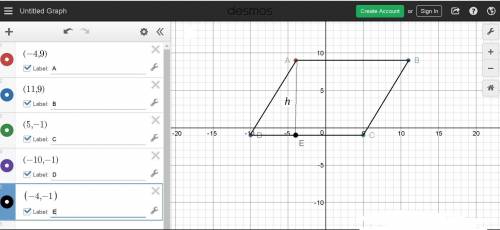
Mathematics, 13.07.2019 12:50 cuhh
What is the area of a parallelogram whose vertices are a(−4, 9) , b(11, 9) , c(5, −1) , and d(−10, −1) ?

Answers: 2


Other questions on the subject: Mathematics

Mathematics, 21.06.2019 22:40, alialoydd11
Afunction g(x) has x-intercepts at (, 0) and (6, 0). which could be g(x)? g(x) = 2(x + 1)(x + 6) g(x) = (x – 6)(2x – 1) g(x) = 2(x – 2)(x – 6) g(x) = (x + 6)(x + 2)
Answers: 1



Mathematics, 22.06.2019 03:30, buddyshaw76
Agame has a rectangular board with an area of 44 in2. there is a square hole near the top of the game board in which you must not toss in a bean bag. the square has side lengths of 3 in. what is the probability of not tossing the bag through the hole? a)9/44 b)3/9 c)3/44 d)35/44
Answers: 2
You know the right answer?
What is the area of a parallelogram whose vertices are a(−4, 9) , b(11, 9) , c(5, −1) , and d(−10, −...
Questions in other subjects:

Mathematics, 08.01.2021 01:30

English, 08.01.2021 01:30

Mathematics, 08.01.2021 01:30

History, 08.01.2021 01:30






Mathematics, 08.01.2021 01:30



















